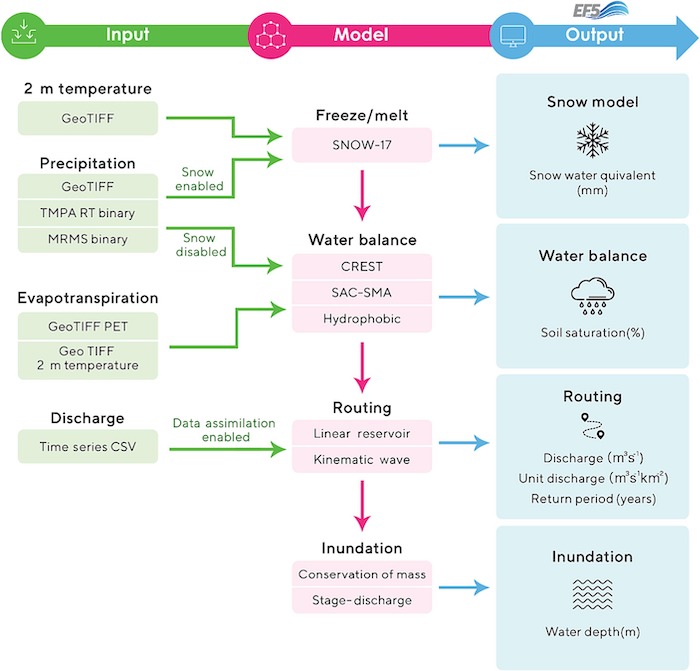
WEN – A decadal review of the CREST model family: Developments, applications, and outlook
Zhi Li, Xianwu Xue, Robert Clark, Humberto Vergara, Jonathan Gourley, Guogiang Tang, Xinyi Shen, Guangyuan Kan, Ke Zhang, Jiahu Wang, Mengye Chen, Shang Gao, Jiagi Zhang, Tiantian Yang, Yixin Wen, Pierre Kirstetter, Yang Hong
Article first published online: 26 August 2023
DOI: https://doi.org/10.1016/j.hydroa.2023.100159
ABSTRACT: Hydrologic models are a powerful tool to predict water-related natural hazards. Of all hydrologic models, CREST (Coupled Routing and Excess STorage) was developed to facilitate hydrologic sciences and applications across various spatial and temporal scales. The CREST model was the earliest implementation of a quasi-global flood model integrating remote-sensing data and is the first operational deployment of a real-time model in the National Weather Service functioning at flash flood scales across a continent. Since being published in 2011, the CREST model has been evolving to empower flood predictions and to inform water resources management practices. Moreover, the CREST model is convenient to couple with other models/schemes (e.g., weather forecast model, snowmelt model, land surface model, hydrodynamic model, groundwater model, landslide model, vector-based routing) for border practices of investigating water-related natural hazards. To date its 10th anniversary, more than 80 peer-reviewed journal articles that have used the CREST model are curated and reviewed from the aspects of model development, worldwide applications, and outreach to emerging regions. Finally, the future directions for the CREST model family are outlined in the hope of stimulating new research endeavors. A digital collection of CREST model family is archived online at https://crest-family.readthedocs.io/en/latest/.
Read the full publication in the Journal of Hydrology.